- Home
- Prelims
- Mains
- Current Affairs
- Study Materials
- Test Series
 EDITORIALS & ARTICLES
EDITORIALS & ARTICLES
11th Oct 2021
CENTRE ORGANISES 'BUDDHIST CIRCUIT TRAIN FAM TOUR AND CONFERENCE' TO PROMOTE RELIGIOUS TOURISM
The Ministry of Tourism organised a Buddhist Circuit Train Familiarization Tour and Conference in the first week of October, which covered the prominent Buddhist sites.
Highlights:


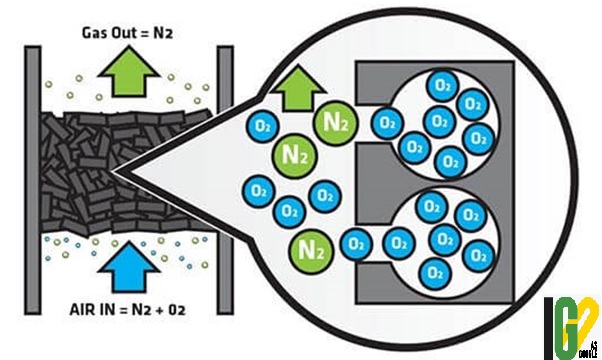
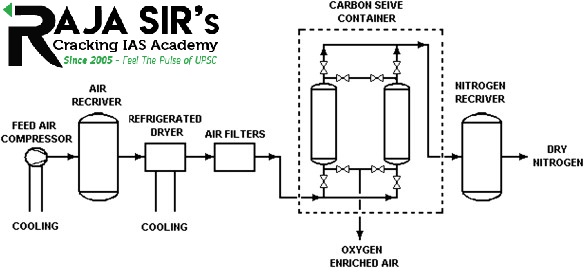
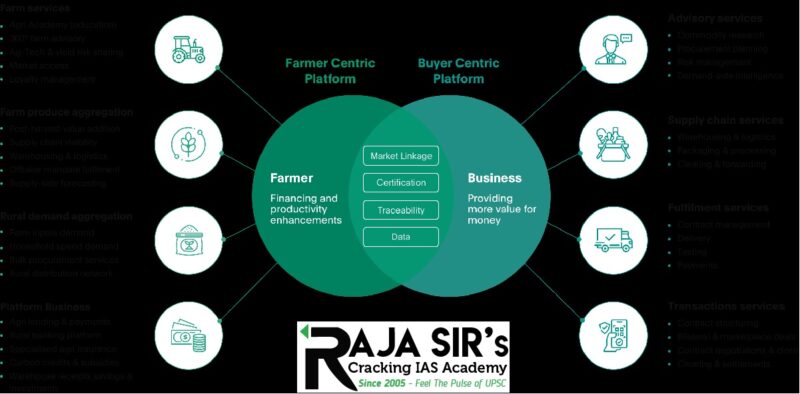
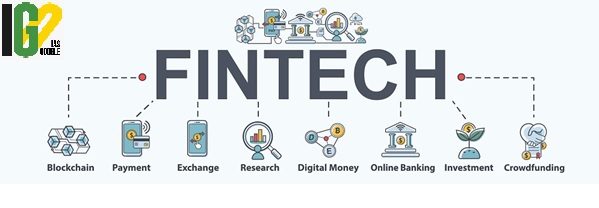
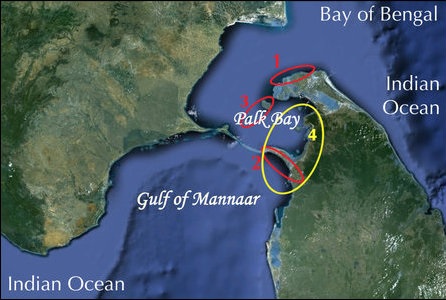



- Organized by the Ministry of Tourism under Swadesh Darshan Scheme.
- Swadesh Darshan Scheme is a central sector theme-based scheme launched in 2014-15.
- A total of 15 themed circuits have been identified under this scheme.
- A circuit can be limited to a single state or can span across states.
- Under this scheme, 5 projects are sanctioned to develop Buddhist circuit in Madhya Pradesh, Bihar, Andhra Pradesh, Gujarat and Uttar Pradesh, with an outlay of 325.53 Cr. rupees.
- Key issues with regard to the development and promotion of tourism in the circuit were discussed.
- Lumbini (Nepal): Buddha’s birthplace
- Bodh Gaya (Bihar): He attained Enlightenment
- Sarnath (Uttar Pradesh): Place of his first sermon
- Nalanda (Bihar): World’s first learning place
- Rajgir (Bihar): Buddha spent several months meditating
- Sravasti (Uttar Pradesh): Place he taught many of his Suttas
- Vaishali (Bihar): Buddha Delivered his last sermon
- Lord Buddha- founder of Buddhism was in Mid-6th century BC.
- Major Schools of Thoughts:
- Theravada:
- Translates to “Doctrine of Elders”
- Most ancient form of Buddhism, dominant in SE Asia
- Emphasis on monastic communities
- Believe Buddha was a Human who found a way to Nirvana
- Mahayana:
- Focusses on the idea of compassion and bodhisattvas
- Believe Buddha is a God who came down to Earth to help people
- Vajrayana:
- Last of the 3 ancient forms
- Encourages rituals, chants and tantra techniques
- Quicker path to enlightenment than other two.
- Theravada:
- PRASAD Scheme: Pilgrimage Rejuvenation and Spirituality Augmentation Drive by Ministry of Tourism.
- Aim: To develop and beautify the identified pilgrimage sites and local art and culture.
- HRIDAY Scheme: National Heritage City Development and Augmentation Yojana by Ministry of Housing and Urban Affairs in 2015.
- Aim: To develop core heritage infrastructure like roads, street lights, footpaths, sanitation etc.

- Developed by Indian scientists at ARCI- autonomous institute under Dept. of Science and Technology.
- Successfully tested at NTPC’s thermal powerplants at Farakka (West Bengal) and Korba (Chhattisgarh). It has been granted Indian patent.
- LCCT can improve life of boiler parts in thermal power plants by 2-3 years, compared to other surfacing technologies.
- Coating process involves application of a thin film of functional material to a substrate to change the surface properties of substrate.
- LCCT involves fusing of Nickel based soft matrix with hard metallic carbide compounds (tungsten, vanadium or chromium) by a high-power laser integrated in a multi axis robot.
- Thermal Spray
- Cold Spray
- Electric Arc
- Plasma Transfer Arc
- Tungsten Carbide Coating
- Accurate
- Selective
- Minimum heat input
- Boilers and its accessories undergo severe wear and tear at high temperature and pressure forcing the power plant in frequent shutdowns and maintenance schedules resulting in massive loss in power production.
- Increased life period of the boiler, granted by LCCT reduces such losses.
- Advanced supercritical and ultra-super critical thermal power plants
- High temperature applications
- Engineering application with high erosive and corrosive environment
- The transfer of this technology to job floors and entrepreneurs will supplement the technological growth of the country.
- India can help other developing and neighbouring countries with the transfer of this technology.

- The plants are established under the PM CARES FUND, across 35 states and union territories. They are considered to be a vital healthcare infrastructure.
- Till now, a total of 1224 oxygen plants have been setup under the fund, with an output of over 1750 MT of oxygen per day.
- PSA is the process by which ambient air passes through an internal filtration system (such as a molecular sieve) which has a large enough total surface area to separate nitrogen (N2) from the air while concentrating the remaining oxygen (O2) to a known purity.

- Pressure swing adsorption (PSA) oxygen generating plants are a source of medical-grade oxygen from ambient air.
- Medical grade oxygen 93 contains between 90% V/V and 96% V/V of Oxygen. Remainder mainly consists of argon and nitrogen.
- They are easy to install: preassembled and skid-mounted, or containerised.
- The exercise has commenced at Chaubatia, Uttarakhand. It is a part of an initiative to develop inter-operability and sharing expertise with friendly foreign nations
- Participants: Infantry Company from Indian Army and an equivalent strength from UK Army.
- The first Ajeya warrior exercise was held in 2013.
- To familiarise with each other’s weapons, equipment, tactics, techniques and procedures for carrying out joint military operations.
- Joint military exercise between the Navies of both countries.
- Started in 2004
- Previous Konkan exercise was held in the English Channel in 2021.
- Joint military exercise between the Air Forces of both countries.

- The integration began with the initiative of KMS (Knowledge Management Systems) 2021-22 in October, 2021.
- Due to variations in the procurement systems of Food Corporation of India and State Governments, there emerge both systemic and implementation challenges for implementing the schemes of Centre Government.
- This can lead to avoidable delays in the release of funds for Minimum Support Price (MSP) to States.
- Standardization of the operations are essential in achieving greater levels of transparency and efficiency in procurement operations, which ultimately lead to fulfilling the goals of National Food Security Act.
- To enable farmers to get the best value for their produce and avoid resorting to distress sale.
- To avoid middlemen in procurement process.
- For better management of procurement operations by the State agencies and FCI (Food corporation of India) with the limited resources.
- For automation and standardization of procurement operations and facilitate storage in godowns.
- These are necessary parameters to ensure uniformity and interoperability in all procurement portals for the proposed Central Foodgrains Procurement Portal to function efficiently.
- The parameters are:
- Online Registration of Farmers/Sharecroppers.
- Integration of registered farmer data with State’s land record portal.
- Integration of Digitized Mandi/Procurement centre operations.
- Online payment through Expenditure Advance Transfer (EAT) module of PFMS (Public financial management System).
- Wheat delivery management.
- MSP is the rate at which Government of India (GoI) purchases crops from farmers.
- MSP was introduced in the mid-sixties when India was food-deficit.
- The government was keen to boost domestic production and crop diversification through the Green Revolution technologies.
- The farmers were reluctant to invest in input-intensive-high yield varieties unless guaranteed a minimum price for produce.
- Mechanism:
- Crops offered by farmers, within the stipulated period & conforming to the specifications prescribed by GoI are purchased at MSP by the State Government agencies and Food Corporation of India (FCI) for Central Pool.
- If producer/farmer gets better price in comparison to MSP, they are free to sell their produce in open market i.e., to private trader/ anyone.
- MSP is set by the Central Government on the recommendations of the Commission for Agricultural Costs and Prices (CACP). It is fixed prior to the sowing season and is not altered.
- In 2021, Government has fixed MSPs for 23 crops:
- 7 kinds of cereal (Paddy, Wheat, Maize, Bajra, Jowar, Ragi and Barley)
- 5 pulses (Chana, Arhar/Tur, Urad, Moong and Masur)
- 7 oilseeds (Rapeseed-Mustard, Groundnut, Soybean, Sunflower, Sesamum, Safflower and Nigerseed)
- 4 commercial crops (Cotton, Sugarcane, Copra and Raw Jute).
- Minimum rate for MSP= 1.5*Cost of production.
| A2 | A2+FL | C2 |
| All cost incurred in terms of cash or kind. Example: price of seeds, fertilisers, pesticides, hired labour, leased-in land, fuel, irrigation, etc. | A2+ value of unpaid family labour. | Comprehensive cost covering rentals and interest forgone on owned land and fixed capital assets, in addition to A2+FL. |
- CACP considers both A2+FL and C2 costs while determining MSP.

- The first Sprint of the series “Sprint01: BankTech” is focused on FinTech’s for the Banking sector.
- It is jointly hosted by IFSCA and GIFT city in collaboration with NITI Aayog.
- The Partners to the Hackathon are:
- ICICI Bank, HSBC Bank, Zone Startups, and Invest-India.
- IFSCA introduced “Regulatory Sandbox” in October 2020 which allows the FinTech entities to conduct experiment with innovative FinTech solutions including customers for a limited time frame.
- To connect IFSCA and International financial service Centre (GIFT IFSC) with FinTech Ecosystem.
- To solve business problems for the Banking Units at GIFT IFSC.
- To promote retail business for the Banking Units at GIFT IFSC.
- FinTech finalists will be allowed to enter IFSCA Regulatory/Innovation Sandbox.
- FinTechs will work directly with the Partner Banks on the problems like APIs, mentoring, guidance, etc.
- Opportunity for the FinTechs to show-case during the FinTech Forum of IFSCA scheduled in December 2021.
- Business Support Solution Partner benefits of up to $25,000 per startup from Zone Startups India's network.
- The (IFSCA) was established on April 27, 2020 under the International Financial Services Centres Authority Act, 2019.
- Headquarters: GIFT City, Gandhinagar, Gujarat.
- It is a unified authority for the development and regulation of financial products, services, and institutions in the International Financial Services Centre (IFSC), India.
- The GIFT IFSC is the only international financial services centre at present.
- It has been established to promote ease of doing business in IFSC and provide world class regulatory environment.
- The objective is to develop a strong global connect and focus on the needs of the Indian economy
- To perform as an international financial platform for the entire region and the global economy.

- Cochin Shipyard Ltd., a company fully owned by the Union Government, was asked to work out the revised cost as the original unit cost of ₹80 lakh was “inadequate” to meet the requirements of the fisherfolk.
- The scheme was launched by Prime Minister in July 2017, being financed by the Union and the State Governments with beneficiary participation.
- It is under the aegis of Blue Revolution scheme and funded by the Centre - 50 per cent and state government - 20 per cent for a boat costing Rs 80 lakh.
- Of the balance 30 per cent, 10 per cent is contributed by the beneficiary (fisherman), and the remaining 20 per cent is funded by banks.
- Aim: Encouraging fishermen to take up deep-sea fishing and put an end to disputes arising between India and Sri Lanka.
- The scheme envisaged the provision of 2000 vessels in three years to the fishermen of the State and motivate them to abandon bottom trawling.

- The state-of-the-art boats, called 'Tuna long lining and gillnetting fishing vessels,' are equipped with modern navigation and communication equipment, advanced net hauling and liner winches.
- Other facilities include galleys, bio-toilet, refrigerated seawater system and stainless steel-cladded PUF (Polyurethane Foam) insulated Fish Hold to preserve the catch.
- Two fishing harbours, Kunthukkal and Mookaiyur, in Ramanathapuram district are also being readied under the scheme for the deep-sea fishing boats.
- Pradhan Mantri Matsya Sampada Yojana (PMMSY) is a flagship scheme for focused and sustainable development of fisheries sector in the country.
- It has an estimated investment of Rs. 20,050 crores for its implementation during a period of 5 years from FY 2020-21 to FY 2024-25 in all States/Union Territories, as a part of Aatma Nirbhar Bharat Package.
- Enhancing fish production by an additional 70 lakh tonnes by 2024-25.
- Increasing fisheries export earnings to Rs.1,00,000 crores by 2024-25D
- Doubling of incomes of fishers and fish farmers.
- Reducing post-harvest losses from 20-25% to about 10%.
- Generation of additional 55 lakhs direct and indirect gainful employment opportunities in fisheries sector and allied activities.
- Designed to address critical gaps in fish production and productivity, quality, technology, post-harvest infrastructure and management, modernization and strengthening of value chain, traceability, establishing a robust fisheries management framework and fishers’ welfare.
- Adopting Cluster or Area based approaches and creation of Fisheries clusters through backward and forward linkages.
- Species diversification, critical infrastructure, marketing networks and employment generation activities.
- New technologies like Re-circulatory Aquaculture Systems, Biofloc, Aquaponics, Cage Cultivation etc.
- Coldwater fisheries development and expansion of Aquaculture in Brackish Water and Saline Areas.
- Establishment of a national network of Brood Banks for all commercially important species, Genetic improvement and establishing Nucleus Breeding Center for self-reliance in Shrimp Brood stock.
- Aquaparks as hub of fisheries and aquaculture activities.
- Insurance coverage for fishing vessels introduced for the first time.
- Central Sector Scheme (CS):
- 100% Central funding for non-beneficiary orientated activities.
- Central assistance for:
- General category: up to 40% of project cost
- SC/ST/Women category: up to 60% of project cost Beneficiary orientated activities
- Centrally Sponsored Scheme:
- North Eastern & Himalayan States: 90 (center):10 (State)
- Other States: 60:40
- UT: 100% Central Share
- Centre + State assistance same as above.
- This assistance will be shared in same manner as for sharing of non-beneficiary orientated activities under Centrally Sponsored Scheme.
- Enhancement of Production and Productivity
- Infrastructure and Post-harvest Management
- Fisheries Management and Regulatory Framework
- Bottom trawling is a fishing practice that herds and captures the target species by towing a net along the ocean floor.
- Bottom trawling, an ecologically destructive practice, involves trawlers dragging weighted nets along the sea-floor, causing great depletion of aquatic resources.

- The government of India has advanced the target for 20 per cent ethanol blending in petrol (also called E20) to 2025 from 2030. E20 will be rolled out from April 2023.
- Major sources of ethanol to achieve the target are rice, corn and sugarcane.
- The new target will:
- Save $4 billion annually by cutting crude imports
- Reduce carbon emission
- Boost farmers income
- Government has termed it as strategic requirement in light of grain surplus (state grain reserves stood at 21.8 million tons of rice against requirement of 13.54 million tons) and availability of technology.
- The report that maps out the new ethanol blending target primarily focuses on food-based feedstocks. This can result in diversion of food grains meant for the poor to ethanol production companies at subsidized rates due to:
- Financial assistance to biofuel producers.
- Faster environmental clearances by the government on such projects.
- E-20 policy can drive farmers toward water-intensive crops and create a water crisis.
- E-20 can result in competition between the distilleries and the public distribution system for subsidized food grains and threaten rural food security.
- The unregulated carbonyl emissions, such as acetaldehyde emission are higher with E10 and E20 as compared to normal petrol.
- Calorific value of ethanol is around 2/3rd of gasoline, thus, the increase in ethanol content will decrease the heating value of the ethanol-gasoline blend. Hence, more fuel is required to achieve the same engine power output.
- Ethanol has a higher-octane number and thus the engine can be operated with a high compression ratio without knocking.
- This increases the efficiency of the engine considerably.
- This combined with optimal spark timing negates the fuel economy debit due to low calorific value of ethanol.
- Raise pan-India ethanol production capacity from the current 700 to 1500 crore litres.
- Phased rollout of E10 fuel by April 2022. Phased rollout of E20 from April 2023, its availability by April 2025.
- Rollout of E20 material-compliant and E10 engine-tuned vehicles from April 2023.
- Production of E20-tuned engine vehicles from April 2025.
- Encourage use of water-sparing crops, such as maize, to produce ethanol.
- Promote technology for the production of ethanol from non-food feedstock.
- Reducing the oil imports.
- Use of ethanol-blended petrol decreases emissions such as carbon monoxide (CO), hydrocarbons (HC) and nitrogen oxides (NOx).
- Improving Energy Security.
- Better air quality.
- Increase in farmers’ income.
- Investment opportunities.
- Fulfilling India’s Nationally Determined contributions (NDCs).
- Even after the Green revolution, India is placed at 94th rank on the Global Hunger Index 2020.
- Food and Agricultural Organisation has estimated that 15% of Indians were undernourished between 2018 and 2020.









 Latest News
Latest News General Studies
General Studies